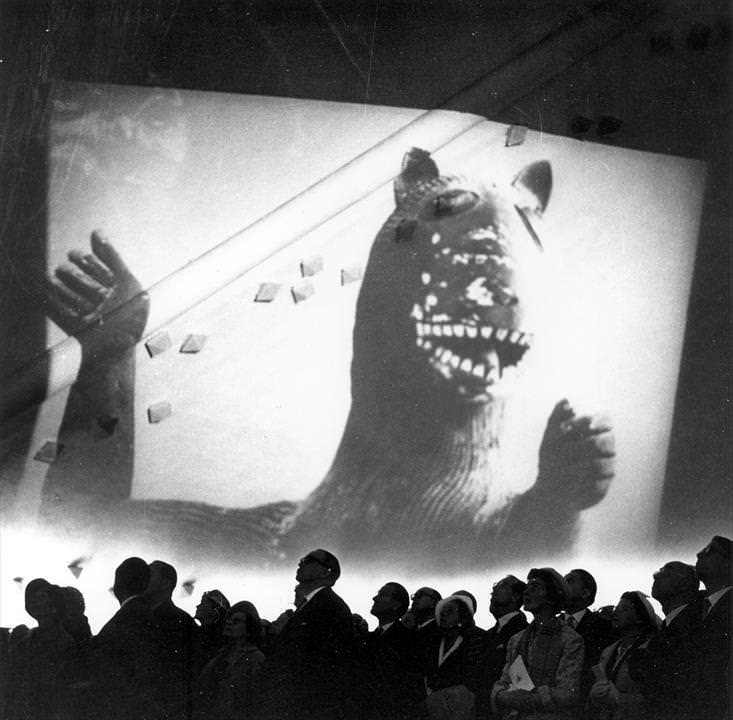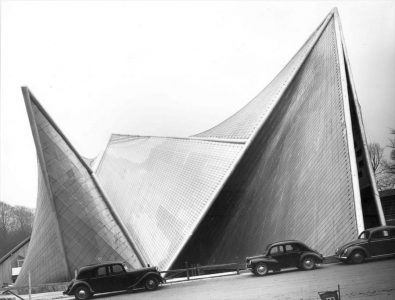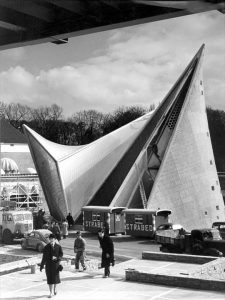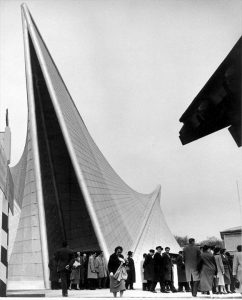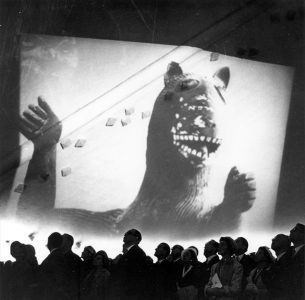Philips Pavilion
Brussels, Belgium, 1957-1958 - Demolished 30/01/1959
« I won't make you a pavilion with facades. I'll make you an electronic poem and the bottle that will contain it. »
Commission
Designed by Le Corbusier’s workshop for the 1958 World’s Fair in Brussels, the pavilion was commissioned by the Philips Company, which wanted to highlight its know-how in the fields of sound and light. During the four months of the Exhibition, it houses a multimedia audiovisual show that highlights the technological progress of the post-war period.


Project
Le Corbusier offers an Electronic Poem, an immersive program involving architecture, film and music. He designed with Iannis Xenakis, one of his main collaborators in the 1950s, the architectural project of the pavilion. On a plan in the shape of a “stomach”, they erect cylindrical reinforced concrete porticoes placed in an inverted V and draw curved walls made of layers of cables. From the outside, the pavilion looks like a vast tent with three divergent points. It is equipped with 325 built-in loudspeakers, a device designed to lead the spectator on the “paths of sound”.
Le Corbusier takes care of the editing of images and lights and entrusts Edgar Varese with the production of the electronic soundtrack. To ensure the interlude between sessions of the Electronic Poem, Xenakis composed Concret PH, an electronic musical piece based on the mathematical data of the construction.
The Phillips Pavilion, representing Holland, was a particularly notable attraction of the 1958 exhibition. It welcomed 1.5 million visitors for 3,013 8-minute sessions of the Electronic Poem.

Subsequent History
Planned to be temporary, the pavilion was demolished on 30 January, 1959.








